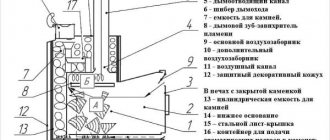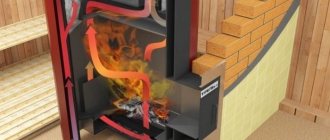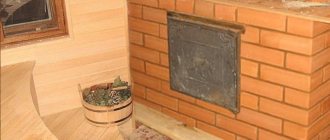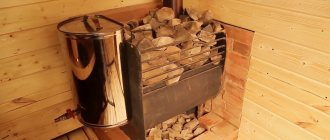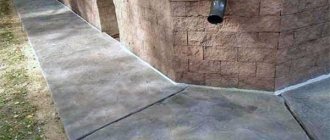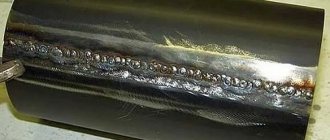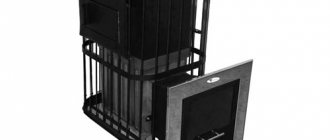Date of publication: September 17, 2018
Bath ceremonies in Russia have always been respected, and remain so today, despite any political and economic processes. To relax after a difficult day at work in the sauna, warm up, relieve stress and tension, get rid of thoughts, and at the same time carry out health prevention - every owner of a bathhouse or sauna has this opportunity.
Equipping your steam room with a good sauna stove is not at all difficult, the main thing is to decide what kind of stove you need - for example, a closed or open type of heater? Which is better? How does one type differ from another? In this article we will try to reveal the basic concepts and differences between the two types of heaters, their advantages and features.
To begin with, you need to define the heater itself. What it is? From the name it becomes clear that stones play a key role here. A sufficient volume of heat-conducting stones is placed in a special casing, in which they are heated and transfer heat to the steam room. This is the heater.
Main types of heater stoves
There is an opinion that a heater is a stove made of stone, but in reality this is not so. The structure is called so because special stones are loaded into it at the appropriate place. When fuel burns, the stones heat up, and the water that falls on them forms steam.
In most cases, brick heaters are built. But in recent years, you can increasingly see metal heaters, both homemade and industrial. Their main advantage is the speed and ease of installation: you just buy a stove and place it in the right place.
Note! Also, metal structures are small in size and do not require a foundation. Now let's take a look at the strengths and weaknesses of each option.
Workmanship
When buying a steel heater for a bath, you should also pay attention to:
The quality of welds - this indicates the strength and reliability of the structure;
On the shape of the bottom of the combustion chamber - if there are bevels, this means that the walls will not burn out from the coal remaining after burning wood;
For fastening a glass door - if there is a frame around the perimeter of the glass, cracking is practically excluded.
Comparison of a closed heater with an open one
The first and key difference between stoves with a closed heater is the location of the stones and the quality of their heating.
Heating in them is provided by all elements of equipment: from the walls and chimney pipe. Thanks to the closed system and heating from several structural elements, the stones are heated to higher temperatures - 400-700 degrees. You can distinguish a closed heater by its appearance. To supply water to the stones in such stoves, a small door is provided; open heaters are not hidden in the stove, but remain visible, fixed in the grate.
Advantages of a sauna stove with a closed heater:
- The steam room does not overheat, the temperature rises evenly, while creating the highest quality microclimate in the room.
- Uniform heating of stones. Yes, it takes longer, but once fully warmed up, the stones will remain hot for many hours.
- Creation of pleasant light steam due to the walls. The steam is not released immediately, but accumulates in the walls of the sauna stove, gradually entering the steam room.
- Long-term heat retention in the steam room without the need to constantly add firewood.
- Increased fire safety properties.
- Great power. Stoves with closed heaters are more suitable for heating large steam rooms.
- The ability to regulate the speed of heating the room; to speed it up, simply open the ash pan of the heater.
- Increased security. When steam is supplied, the possibility of scalding is completely eliminated.
With such a large number of advantages, only 2 points are included in the disadvantages:
- Long kindling time for long-term heat maintenance.
- Increased fuel consumption to set temperature.
The disadvantages are mitigated by the fact that the heater cools down as slowly as it heats up. If to maintain heat in open-type stoves you need to constantly keep the firewood burning, then you don’t need to constantly worry about adding fuel.
Varieties
There are many types of heater stoves. In fact, any stove can be classified as such if it is equipped with a compartment for placing stones. Furnaces are divided according to different criteria.
First of all, by type of firebox:
brick
steel
cast iron
combined
- Brick ovens are safe and easy to use. However, they require a long warm-up period, which means high fuel consumption. At the same time, a heated brick oven is able to retain heat for a long time, which is not observed when using metal ovens.
- Metal stoves , on the contrary, heat the room quickly and economically. However, they cool down just as quickly, and only a massive heater can stop this process.
- Combination stoves are a combination of a cast iron or steel firebox with a brick body, or a brick firebox on which a steel water tank is installed and a compartment for stones on the side. This design option is very common.
By type of heater:
open
The stones are in plain sight (laid in a mesh or basket made of steel strips);
closed
The stones are located in a closed section. Access to them for water supply is made through a special hatch or door.
It is generally accepted that open heaters produce more humid steam, and closed heaters produce drier steam.
By fuel type:
wood (or solid fuel)
gas
electric
liquid fuel
The traditional option is a wood stove. However, in terms of efficiency and heating speed, a gas furnace is the leader.
Electric designs practically do not lag behind gas ones - they do not require monitoring and constant supply of fuel, and allow you to precisely adjust the heating mode. However, in regions with expensive electricity, the use of heating elements costs too much.
Liquid fuel stoves are powered by hydrocarbon fuel compositions - gasoline, diesel fuel, kerosene, etc. They are quite effective, but the fuel will have to be stored somewhere, which in itself requires special measures.
By operating mode:
long burning
As a rule, these are brick ovens that can be fired continuously as long as fuel is available;
periodic combustion
Typically, these are metal stoves (steel or cast iron), which are heated only for a certain time.
The first group of stoves is characterized by durability and the ability to accumulate and gradually release heat, ensuring uniform heating of the room. The second group is valued for its ability to quickly warm up the room and save time for the bathhouse owner. However, after the end of the kindling, the temperature in the bathhouse quickly drops.
Why is a stove with a closed heater best suited for a Russian bath?
Before answering this question, you need to decide how a Russian bath differs from a Finnish sauna. The main difference is the humidity of the steam. In Finland, a dry air bath was invented - with a very high air temperature and practically no steam. Stoves with exposed stones are suitable for such saunas.
In a Russian bathhouse, it is necessary to maintain relatively high air humidity - about 60%. In this case, the steam should be as finely dispersed as possible - the smaller the drops of water that make up it, the more pleasant it is to be in the bathhouse. A stove for a Russian bath with a closed heater is ideal for creating such steam.
Traditionally, Russian sauna stoves were made of brick. They took up a lot of space and required special care. A modern cast-iron sauna stove with a closed heater is no worse than a brick one (provided that it was manufactured by a reliable manufacturer with knowledge and attention to detail) - and at the same time it is much more compact and easier to maintain.
Important elements of a stove with a closed heater:
- A screen that blocks “hard” radiation. The further the stones are located from the walls of the oven, the softer and lighter the heat will be. Therefore, a sauna stove with a closed heater, equipped with double walls, is a good choice. Also, after installation, the stove can be lined with brick or natural stone
- Steam "gun". The best stoves for a Russian bath are those that use a tube (or several tubes) with a funnel into which water is poured to supply water to the stones. This design allows you to isolate the heater from contact with air in the steam room - and get excellent light steam
We recommend reading:
Bathhouse made of SIP panels
From us you can buy sauna stoves with a closed heater from the world's best manufacturers. The specialists of these companies know very well how to achieve the maximum effect when vaping - and use this knowledge when developing their devices.
Care of the heater
Regardless of which heater was installed, closed or open, it should be regularly inspected and the stones sorted. Some stones may crack or break when exposed to high temperatures. In this case, the cobblestones should be replaced.
The walls of the heater constantly expand and contract during the operation of the bath. As a result, the brickwork gradually collapses. If cracks or crevices are found, they should be immediately covered with a clay solution, otherwise carbon monoxide may enter the steam room along with smoke.
If you constantly monitor the heater, there will be no problems, and it will only delight you with its excellent steam.
Shuvalov Pyotr Vasilievich
Technical requirements
The heater is necessary to perform several functions:
- reducing fuel consumption;
- strong heating of stones that are needed to produce steam;
- ensuring a high level of efficiency;
- maintaining the temperature.
Technical requirements for furnace equipment:
- The housing must be solid and sealed to prevent smoke from entering the premises.
- The minimum height of the ash pan from the floor is 15 cm.
- The materials used to make the stove should not emit harmful substances when heated strongly.
Requirements for installation of furnace equipment:
- The floor in front of the stove must be covered with a metal sheet.
- The foundation for installation of furnace equipment must be reliable and stable. For a brick oven it is better to make a separate foundation.
- There must be at least 50 cm of free space between the ceiling and the stove equipment.
- The surfaces around the stove must be covered with slabs of non-combustible material.
- The place where the chimney passes through the ceiling must be covered with a special sleeve or casing made of non-combustible material.
Gas stoves must not be installed independently. To do this you need to obtain the appropriate permission. Installation must be carried out in compliance with many rules, taking into account certain features.
Individual choice
Requests for stove equipment for a steam room vary markedly - from family use to professional use.
For a Russian bath, the ideal option would be a closed heater with the ability to close and open the vents to regulate heating and humidity. The unit provides “light” steam and a soft microclimate due to the predominance of thermal radiation over convection.
A Finnish sauna or dry-air steam room requires the installation of a steel stove with convection holes, which will quickly heat the room to 90 degrees. Stone backfill in a casing or mesh helps reduce the heat. The larger the stone mass, the longer the stove retains heat and creates a softer microclimate.
When choosing a model, consider:
Thermal power of the heater - in summer, all rooms of the bath should warm up in 40 minutes, in winter - in 1.5-2 hours.
Duration of operation - at least 3-4 hours of continuous operation with good heat retention.
Quality of workmanship – cast iron, stainless heat-resistant steel, carbon steel with a thickness of at least 6 mm are recommended.
The presence of a heat exchanger to increase efficiency and reduce fuel consumption.
Types of construction
Some owners of private residential buildings believe that a heater is a stove made of stones. This is a wrong opinion because they are present in the design only in a certain place. Special stones are loaded into the stove so that they heat up, and when water hits them, steam is formed.
Heaters are usually built from bricks. Metal is also used. Steel options are sold ready-made. They are also manufactured according to individual drawings. Less time is spent on equipping bathhouses with metal models. Most often, the steel version is purchased ready-made and installed in the desired location.
On a note! The metal model is a sauna stove, the dimensions of which are usually smaller than the dimensions of a brick heater.
Options for metal and brick sauna stovesSource obustroeno.com
Advantages and disadvantages
A stove with a closed heater is an interesting development. This type of unit is chosen only by connoisseurs of real Russian steam.
The increased demand for models is due to the following advantages:
- fast heating. The steam room is filled with hot air in a short period of time. At the same time, there is a favorable microclimate, more comfortable conditions for paired procedures;
- effective “work” of stones. They warm up quickly enough due to the prolonged accumulation of heat;
- overheating of the steam room is excluded;
- creating high-quality steam. Well-designed walls of the unit are designed to retain and infuse steam inside the housing. If you compare the steam of a closed heater and an open one, then in the first it is moderately dry and light;
- high-quality heat retention. There is no need to reheat the oven;
- safety of use. The design of hermetic elements eliminates the risk of fire and human injury;
- heaters are designed to heat large bath rooms - depending on the model;
- the ability to regulate the temperature and air supply in the steam room;
- affordable price.
The disadvantage is the high fuel consumption, unlike open-type heaters.
However, the bathhouse is not used as often as showers. Therefore, this minus will not be so significant.
Distinctive features
Not every person can afford to buy or build a real brick oven. Therefore, manufacturers offer many variations of heater stoves, the elements of which are made of cast iron or metal.
They have some design and functional features:
- Screened walls. Double casings around the unit body reduce convection - hard IR radiation. Some models are lined with natural minerals. If the unit does not have such walls, then it is recommended to make a brick screen and vents with doors around the body.
- Steam gun. The operation of a closed heater depends on the quality of its insulation from the walls of the unit and the state of the air in the steam room. The better the indicators, the hotter the stones become hot. Therefore, inside the heater there is a system of tubes with holes. The top of the tubes is equipped with a special container for water. The liquid heats up, transferring heat to the stones, and steam enters the room.
- Sealed doors. Such elements are securely fastened with bolts and do not form even the smallest gaps. The heat is retained and the safety of using the stove increases. Many models are equipped with a door made of heat-resistant glass, which allows you to create a unique atmosphere in the bathhouse.
IMPORTANT! The operating principle of a closed heater looks like this: fuel is loaded, the door closes, and the combustion process begins.
When a certain temperature has been reached inside the unit, the door opens and steam enters the room. The air in the steam room is heated to 45-60 degrees. Typically, such an event requires 4 hours.
Shielding walls
In addition to the fact that a closed heater is required, it is also important to shield the flow of hard radiation coming from the metal walls. A number of manufacturers create double metal casings around the unit body that reduce convection.
For the same purpose, cladding with natural minerals can be used. Similar stoves are offered by many manufacturing companies, but since natural finishes are very expensive, the products cannot be called cheap.
If we are talking about a metal sauna boiler, then the walls of such a device are seriously hot! Infrared radiation comes out in a powerful stream, and if a person is at a short distance from such a unit, his skin will become very red, as if from a burn, and a burning sensation will appear.
This is also wrong from an economic point of view. Energy creates inconvenience for people and is consumed very quickly.
It would be much better to direct the radiant heat into a stone or brick screen.
What will it give:
- softer warmth;
- eliminating the possibility of burns;
- fuel economy;
- accumulation of heat, its gradual release.
Manufacturers offer ready-made screens made of natural stone, “cut” exactly for a specific model.
They take up much less space, have optimal thermal conductivity properties and look great! True, such screens are expensive and not everyone can afford them.
You can line the stove with brickwork yourself. Sometimes the screen is made with a small gap between the brick and the walls. A prerequisite is the presence of convection holes through which heat will freely escape into the steam room. If this is not done, the efficiency and properties of the stove will be like those of a brick stove.
And in order to be able to regulate the temperature, sometimes stove doors are inserted into the solid masonry.
Many boilers are made directly under the brick lining. They have ledges and a shape that helps secure the masonry.
Another option, if the firebox is large, it can be lined with fireclay bricks from the inside. This fireproof material will increase the heat transfer time and protect the metal case from burning.
Opposite the door of a closed heater, you will need to install a second door in the brick mass.
How to choose the optimal design
In essence, we have already answered this question in the previous chapter, but the answer referred to the specifics of a particular bath.
Let's look at the defining points again:
How to calculate the required volume of container? Assume that one washable item requires at least 10 liters of water.
How are adjacent rooms supposed to be heated? If there are no other options, you can use a remote tank for this purpose. It goes without saying that in this case it should not be thermally insulated. Another option is to use a furnace to heat the antifreeze in a separate heating system.
Are you ready to create forced circulation? If yes, then there are no obstacles to choosing any of the described designs. In this case, you will receive not only a shower, but also, if desired, heating through radiators. True, you will have to organize the system according to all the rules.
We recommend reading:
Wood-fired sauna: features of the sauna and choice of firewood
For example, do not forget about the need to install an expansion tank, which absorbs excess fluid in the system.
Advantages of such designs
A traditional wood burning stove with a water tank has the following advantages:
- Ergonomic and compact. Wood-burning sauna stoves with a tank, especially those with a remote container and the samovar type, take up minimal space and at the same time provide people in the steam room with everything they need: heat and hot water.
- Good aesthetic qualities. The finished stoves look very attractive and have a beautiful finish.
- Autonomy. They don’t require any settings, just add water and melt.
- High efficiency. One or two stacks of firewood are enough to warm up the bathhouse and heat the water, provided that the power of the heating equipment is correctly calculated.
Buying a heater: the low price trap
You shouldn’t skimp on a sauna stove. A low price tag for a heater usually means that:
- low quality metal used;
- the thickness of the walls of the firebox and body is minimal;
- the equipment is meager;
- manufacturing technology is outdated.
But an excessively high price does not always indicate impeccable quality. The price tag is inflated due to the popularity of the brand or advertising costs when promoting a new product to the market.
The principle of operation of a sauna stove with a water tank
Heating units have the following operating pattern: fuel (wood) is placed in the firebox and set on fire. During the combustion process, a sufficient amount of thermal energy is released. Warm air moves from bottom to top and heats the cobblestones in the heater. This way the stones heat up and maintain the desired temperature in the room.
The wood is ignited from below. Some models of sauna stoves need to constantly add fuel, otherwise the stones quickly cool down.
Other types of units have a longer combustion period. They can work for 7-20 hours without constantly adding firewood. This possibility is achieved due to the reverse direction of combustion - from top to bottom.
It is best to use peat briquettes, alder logs or coal as the main fuel. To warm up the room faster, use only dry firewood. There is no need to use logs made from coniferous trees; they will quickly pollute the chimney, releasing a large amount of soot.
EasyStim ovens
These units are made from stainless steel 4-6 millimeters thick, the chromium content in them is 17%. In order to reduce the number of welds, the firebox and container for stones are formed by stamping and bending. To strengthen the walls of the firebox, special stiffening ribs are used, and to improve the heating of the stones and reduce the load on the bottom, it is made round in shape.
To prevent flames from entering the chimney, a flame breaker is installed in the firebox. The chimney channel is curved in order to more efficiently use the energy obtained during the combustion process. As a result, the flue gases go around the container filled with stones from all sides, which leads to their high-quality heating.
In order to regulate the operation, there is a handle at the top of the unit that changes the location of the thermostat damper. When the gap is open, intense heating of the room occurs, and if it is closed, the stones are heated.
Such closed-type sauna stoves have steam generators installed inside, namely systems consisting of tubes with holes that are located in the heater. The water that enters there falls on highly heated stones, and is then distributed over a large area due to the presence of a system of holes.
The water begins to evaporate, falling on the hot stones. The steam that is formed rushes up, bypassing the stones towards the outlet located above. As a result, the steam is broken into small particles, heats up more and becomes almost transparent.
This company presents five lines on the market. Four of them are for baths of various sizes: Sochi, Yalta, Gelendzhik, Anapa. “Cherepovets Blast Furnace” is offered for professional service. A special feature of EasySteam products with a closed heater is the side door, designed for convenient maintenance of the heating unit. It may be on the left or right, so this point needs to be discussed when ordering.
Furnaces are produced either protected by a brick screen, or lined with slabs of coil or soapstone. Technical parameters differ for different models. Those that have lining are characterized by large size and weight, as well as a significant price. The weight of the facing material can reach 250 kilograms.
Such a closed heater for a bath, such as “Sochi”, “Gelendzhik” and “Anapa” has the same device inside. They differ in power, and accordingly, are suitable for steam rooms of various sizes. Modifications in the same line have differences in the size of the compartment for stones, and based on this, the thermal inertness of the furnace.
The greater the number of stones, the longer the steam room warms up, but at the same time it allows you to get a larger amount of steam. Its inertia is also ideal for drying the steam room, since the stones release the resulting heat for a long time.
A new product among the EasyStream line, “Yalta,” has a different design, which is a kind of mesh oven. But it is quite unconventional: a closed internal heater is located around a chimney, which is surrounded by an open and ventilated heater.
Types of sauna stoves with a water heat exchanger
Units for heating a steam room can be made of several types, depending on the material of manufacture. The following types exist:
- Metal. Most often made of steel or cast iron. There are many factory-made stove models on the market. Despite this, they can be made independently in various shapes (square, oval, rectangular). Depending on the design features, they may have heat exchange containers and different doors.
The main positive aspects of metal sauna stoves are: ease of installation, affordable price, quick heating of the room, no need to make a strong foundation, possible installation of a water tank on the chimney.
The negative characteristics of a wood-burning stove in a bathhouse with a water tank are poor performance under sudden temperature changes, rapid loss of thermal energy (cooling).
- Brick. Brick stoves for baths, equipped with a water tank, powered by wood, are distinguished by the absence of negative parameters that metal options have. Thanks to the stone construction, it is possible to retain heat for a long period. Beautiful appearance also plays a big role when choosing a heater material; brick options look much more beautiful.
Despite the large number of positive characteristics of a brick kiln, some disadvantages stand out: high construction costs, high complexity of construction, and the need to create a massive foundation.
Requirements for a modern heater
A high-quality sauna stove meets a number of requirements:
- made of materials designed to withstand intense thermal loads over several years of operation;
- safe to use, the risks of fire, carbon monoxide poisoning, etc. are minimized;
- a balance is maintained between the heating rate and cooling intensity, ensuring a comfortable level of humidity;
- uses fuel economically;
- as compact as possible without sacrificing performance;
- convenient to use.
Useful properties of steam
It is impossible to imagine a real Russian bathhouse without steam. Steam expands skin pores and removes harmful toxins from the body. The skin becomes more elastic and firm.
Heat dilates blood vessels, stimulating metabolism. The human brain is freed from mental and emotional stress, bringing the entire body into a peaceful state.
The heat of a steam room is an excellent cure for joint disease. It was not for nothing that our ancestors loved going to the bathhouse, mercilessly whipping themselves there with brooms, and to get steam, you would need a sauna heater. Let's figure out how to choose a heater for a bath or make it yourself. Most often, a traditional wood stove is used, although an electric one can be installed.
